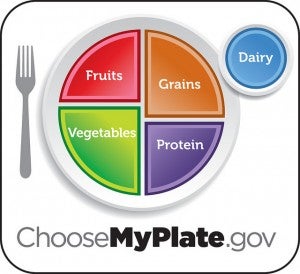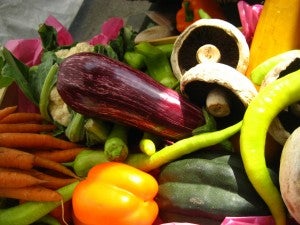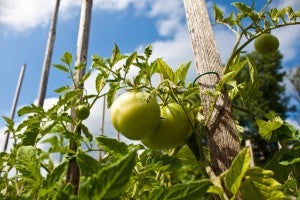 Some people don’t like the idea of the federal government telling them what they should and shouldn’t eat. Others feel the science of nutrition is still evolving—are eggs good or bad for us this week?—and don’t know whether to trust the recommendations.
Some people don’t like the idea of the federal government telling them what they should and shouldn’t eat. Others feel the science of nutrition is still evolving—are eggs good or bad for us this week?—and don’t know whether to trust the recommendations.
But there’s no denying that USDA dietary guidelines have a profound influence on the public discussion over our food choices.
So it is a good thing that the commission that suggests updates to these guidelines every five years has come forward with a proposal that for the first time recognizes an inarguable fact: dietary choices have an impact not only on our health, but also on the health of our environment.
Food fight
The scientific advisory panel recommends a diet with more plant-based foods – such as vegetables, fruits, whole grains, legumes and nuts – than the typical American diet, which is higher in calories and includes more meat.
Although the panel concludes that a more environmentally sustainable diet can be achieved without eliminating any of the four food groups, their recommendations have touched off heated debate among agricultural producers, consumers, health experts and environmental organizations, all of which have until May 8 to register public comments with the departments of Agriculture and Health and Human Services .
Where we stand

Credit: Flickr user Jeremy Keith
Environmental Defense Fund would never support a proscriptive approach that tells people what they can and cannot eat. Eating more plant-based foods and less meat is a personal choice. It should be respected but never required.
But we do believe that consumers should be aware of the nexus between diet and the environment to make informed decisions. In this respect, the recommendations are a positive step in the right direction.
Healthy discussion
We need an honest discussion, for example, about ways to reduce methane emissions from livestock production, because methane is a powerful greenhouse gas.
We need to be talking about ways to reduce fertilizer runoff from crops to improve climate stability and water quality.
We need to discuss how farmers and ranchers can increase productivity while growing habitat for vulnerable wildlife.
And we need to make sure the world’s fisheries are managed sustainably to provide more fish in the ocean, more food on the plate, and more prosperous fishing communities.
These sticky problems will not be resolved by a single update to the U.S. food pyramid. That’s why EDF is working with agriculture and industry on multiple strategies for meeting increasing demands for food in ways that improve the environment.

Credit: Flickr user Gerwin Sturm
Collaborative solutions
Across the Corn Belt, EDF is working with farmers, agribusinesses and food companies to make fertilizer efficiency business-as-usual, so that more fertilizer is taken up by crops and less is lost to the air and water. This will go a long way toward maximizing the effectiveness of farmers’ input costs, reducing agriculture’s GHG footprint and preventing toxic algae blooms from tainting water supplies.
We’re collaborating with ranchers and energy developers in the West to create habitat exchanges that can scale up habitat protection for at-risk species and ensure that America’s needs for food, fiber and fuel are met.
We’re developing new carbon markets that will allow agricultural producers to earn extra revenue for implementing practices that reduce greenhouse gas emissions, such as spreading compost on the range, or avoiding conversion of grasslands.
And around the world, we’re working with fishermen, scientists, government officials and non-profits to bring our oceans back to life. Our seafood selector helps consumers navigate which fish and shellfish varieties are most nutritious and sustainably managed so they can make informed decisions about what to eat.
Test the recipe
Some will say that the best thing the federal government can do to promote sustainable food production is stay out of the way. Others will point to specific interventions or even a top-down approach.
My perspective is that we’ll need both the public and private sectors to meet the challenge before it’s too late. The USDA’s dietary guidelines are one ingredient in a complex recipe that will require constant tinkering and testing. Let’s keep the discussion going until we get it right.









